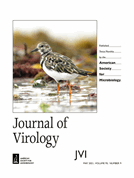AI Summary
Zika virus (ZIKV) is primarily transmitted by mosquitoes, but can also be sexually transmitted and transmitted vertically from mother to child. It first emerged as a public health concern in 2015 and affected millions of people, causing microcephaly and other complications. ZIKV infection during pregnancy can lead to congenital malformations, but even those without apparent malformations may experience developmental delays. Recent studies have shown that ZIKV-exposed children may have delays in cognition, language, motor skills, and social-emotional abilities. The long-term effects of neonatal ZIKV infection on reproductive health are still unknown.
INTRODUCTIONZika virus (ZIKV), a member of mosquito-borne flaviviruses, is primarily transmitted by Aedes mosquitoes (1); however, sexual transmission and vertical transmission of ZIKV have been reported (2). ZIKV was first discovered in the Zika jungle of Uganda, Africa in 1947 (3), and emerged as a public health concern during the ZIKV epidemic from the Asia-Pacific region to the Americas in 2015–2017 (4, 5). ZIKV affected millions of people in 87 countries and territories, caused thousands of microcephaly cases, and aggravated the disease burden on countless families (6, 7).ZIKV infection in pregnant women during the first trimester can cause congenital malformations including microcephaly (8–10). By contrast, ZIKV infection of pregnant women during the third trimester receives little attention because their newborns did not exhibit apparent congenital malformations (11). Epidemiological investigations indicated that these newborns also had a variety of developmental complications (12–17). In Brazil, an investigation of 115 three-month-old neonates showed that 56 ZIKV-exposed neonates had significantly lower weight and body length than 59 non-exposed neonates (15). Recent studies also revealed that the majority of ZIKV-exposed children had developmental delays in cognition, language, motor, and adaptation, especially social-emotional abilities from 7 to 32 months old (12–14). In 2019, an investigation of 22 male children exposed to ZIKV showed that 8 of them had cryptorchidism (17). These studies suggested that ZIKV infection can cause various developmental delays in newborns, but the long-term consequences of neonatal ZIKV infection on their reproductive health remain unclear.In our previous study, using ZIKV-infected suckling mice, we

